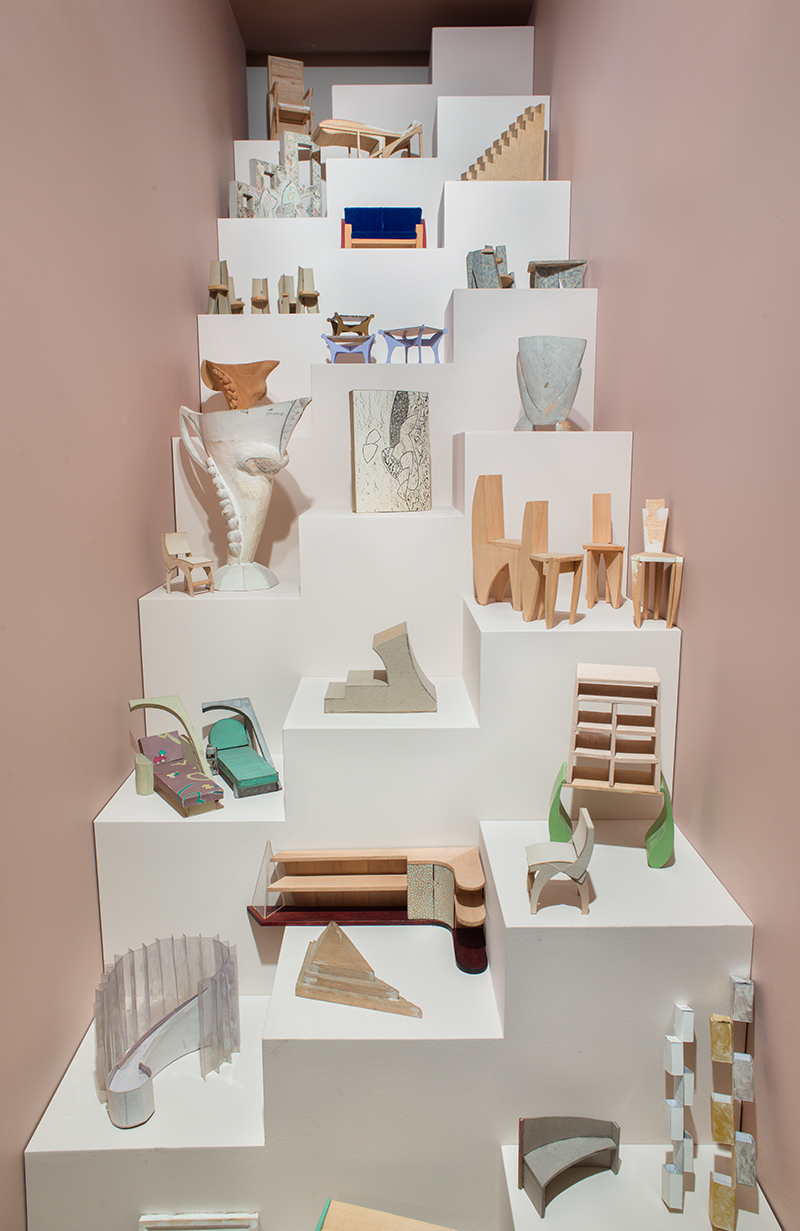 All photography by Jason Mandella; courtesy of The Jewish Museum.
All photography by Jason Mandella; courtesy of The Jewish Museum.
Exhibition
Marc Camille Chaimowicz: Your Place or Mine… at the Jewish Museum
“What is going on here?” This is probably the first question you’d ask if you weren’t familiar with Marc Camille Chaimowicz when visiting Your Place or Mine… at the Jewish Museum in New York. The exhibition, running until August 5, is part of the artist’s “ever evolving project,” started forty years ago, continuously making objects and art while re-conceptualizing the design of his apartment, which was originally his performance space.
Loosely organized into the living area of a home, the show begins with L’Entrée, a hospitable, lavender-colored alcove housing a handmade peg rail displaying the artist’s dandyish hat and clothes, some of them embellished with patterns from a paint roller. In a gentle but deliberate way, Chaimowicz has staked out the space, demonstrating that he’s moved in. The exhibition riffs on the double entendre throughout: Is this your place or mine? Who belongs here? Moreover, since the museum building was once an haute bourgeois house belonging to a prominent Jewish family, what about provenance? By raising these questions, the artist has drawn attention to the play of interior and exterior, private and public, memory and history, and he meticulously honors these complexities and juxtapositions as he reinterprets his ideas for the new setting.
Le Salon, the transitional room, with its low-to-the-ground lounging platform covered in brightly patterned tufted wool, throw pillows, French rotary phone, and martini glass, can be thought of as a personal place for daydreaming and intimacy. Chaimowicz has been adapting these objects since the mid-1980s, but the room also includes eight newly made decorative panels, Concerto for New York, saluting the host city outside; and the commissioned wallpaper, Vasque, with its arrangement of decorative urns, pays homage to the Jewish Museum’s ornate architectural ornament. In many places throughout the show, Chaimowicz has allowed ceiling moldings and dark wood carving, the evidence of the building’s French Gothic revival style, to peek above or around the groupings of objects. This is especially lovely in the last two rooms, where he’s left many of the windows exposed or covered them with woven and embroidered sheer fabric so you can look out onto Central Park or experience the many changes of light refracted through the curtain folds. In that last space the objects are raised on curvilinear platforms, arranged as if they’ve migrated from a domestic space into a gallery.
The artist has a rigorous and restless mind and the materials he presents are often disoriented and disorienting, filled with irony and theatricality. In the different rooms within the exhibition, the viewer encounters a fascinating collision between masculine and feminine, French and English, decorative and fine art, present and past—as well as nostalgia with some embedded secrets, such as the wartime history of Chaimowicz’s Jewish father’s family. At many points it seems he wants a breakdown of order, so we see his teetering Desk on Decline, a hybrid object, seven feet wide, part writing table and part stairs, yet impossible to write on and even more impossible to ascend. The show concludes with a set of vintage-looking etched and mirrored glass doors entitled end game, playfully teasing expectations, enticing you to push them open and keep walking into an extended exhibition and extended time.










